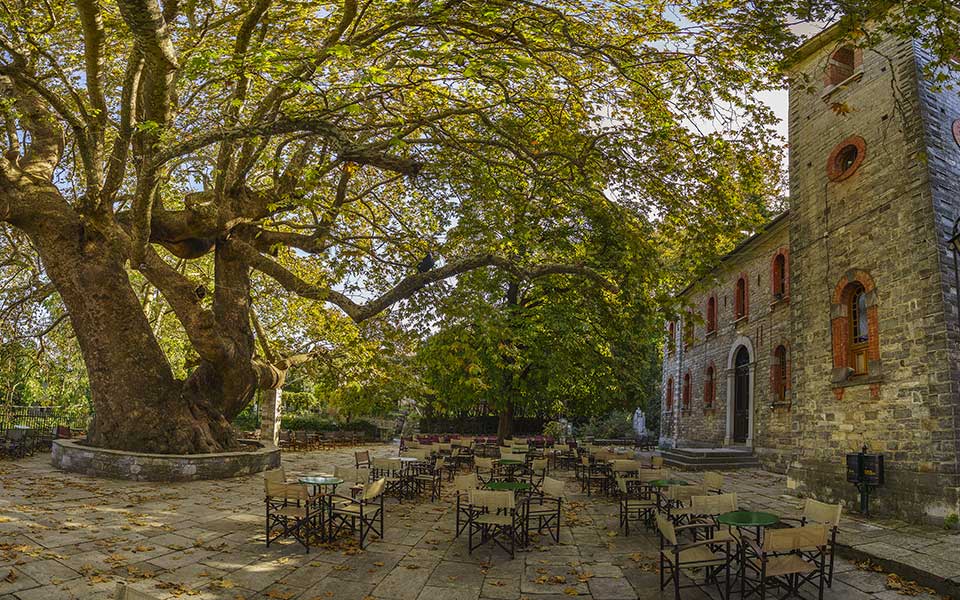Mount Pilio has a length of about 44km, but the coastline of the peninsula on the side of the Aegean Sea stretches 70km. From Zagora and its beaches in the north to the village of Trikeri on the southern tip, small coves, large sandy shores, and rocky coastlines shape the scenery for which the area is renowned: the perfect combination of mountain and sea.
While in northern and central Pilio, the eponymous mountain takes the leading role, further south, smaller mountainous formations create equally spectacular landscapes. Villages are perched high up, yet still close to the sea, beaches are lapped by waves, and around them, small settlements have been established to cater to the needs of visitors.
Starting from the northern side of Pilio, the villages perched on its slopes always offer cooler temperatures, day and night. You will confirm this while driving there, as at Hania Piliou (1190m), the highest point where the provincial road passes, the thermometer at the height of summer, even during the middle of the day, reaches just 20 degrees Celsius.
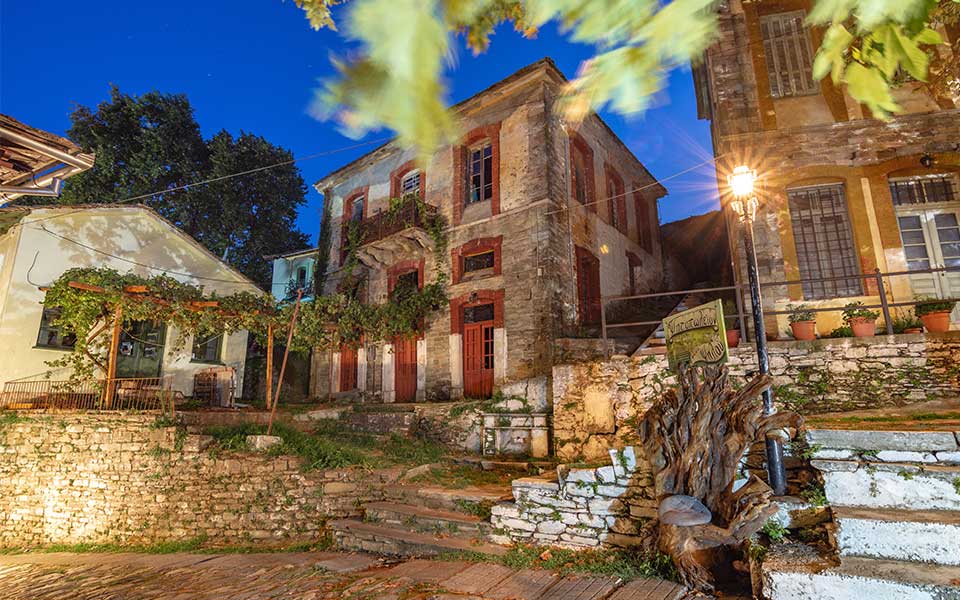
© Shutterstock
With the mountain village of Zagora as your base, you can head towards some of the most beautiful beaches: Parisena, Horefto, and Aghioi Saranta. Parisena does not have beach umbrellas or sunbeds, and the easiest way to approach it is through an old cobbled path starting from Horefto, which traverses the rocky cliffs dividing the two sides. The beach of Horefto stretches over 1.5km and is ideal for peak hours during the day, while at the neighboring beach of Aghioi Saranta, you’ll find crystal-clear waters and coarse sand. After a refreshing swim, return to Zagora and its large, cool square with age-old plane trees in the afternoon.
The village offers numerous accommodation and dining options, and, at the beginning of September, the famous Zagora apples are harvested. The Zagora Agricultural Cooperative is one of the oldest in Greece, established in 1916. It is also the first agricultural cooperative in Europe to obtain PDO (Protected Designation of Origin), for its Starkin apples in 1996 and for its Firiki apples in 2011. It has 650 members, representing 98% of Zagora’s producers, cultivating 12,000 acres and producing 10,000-12,000 tons of apples annually. They harvest the fruits one by one from the trees and distribute them both in Greece and abroad.
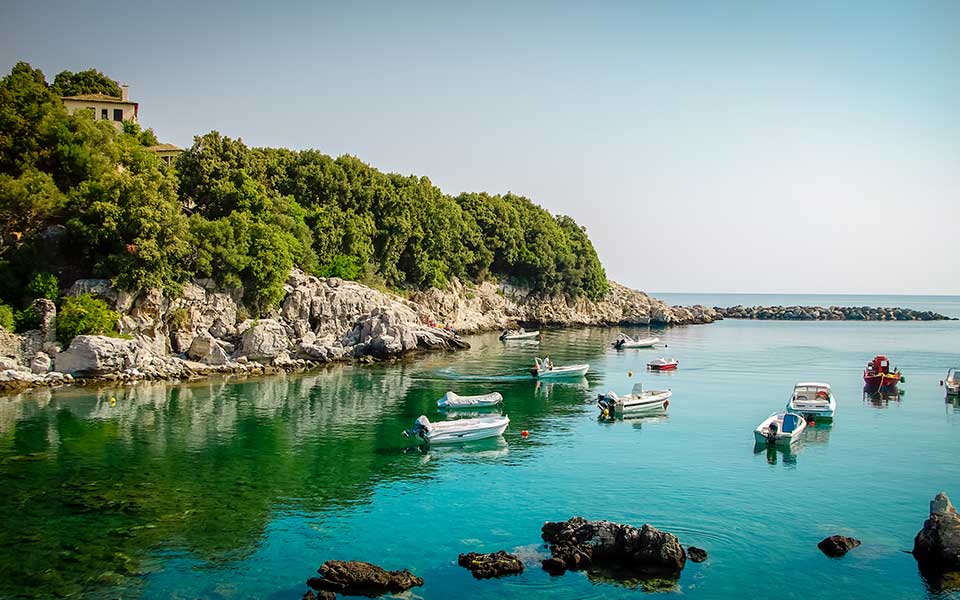
© Shutterstock
Further south, starting from Tsagarada as your base, you will find yourself near several stunning beaches. Plaka has coarse sand and a large expanse; in Aghios Ioannis, there are facilities for snacks and meals. At Papa Nero, if you prefer not to be on the sand (especially when it’s windy), you can sit at one of the shaded cafes along the beach.
Damouhari is renowned for the impressive scenery created by the vertical cliffs on the right and left, serving as the endpoint of the trail that begins in the village of Tsagarada. This is one of the most beautiful hiking routes in Pilio, starting from the area of Aghia Kyriaki. It follows the traces of an old cobbled pathway that connected the settlement with Damouhari’s port. Some parts of the path are locally referred to as “kagiolia,” meaning “serpentine turns,” as the trail indeed winds around the mountain slopes. It crosses streams, dense vegetation, has steep inclines at certain points, but also offers beautiful views of Eastern Pilio and towards the end, overlooking Damouhari Bay.
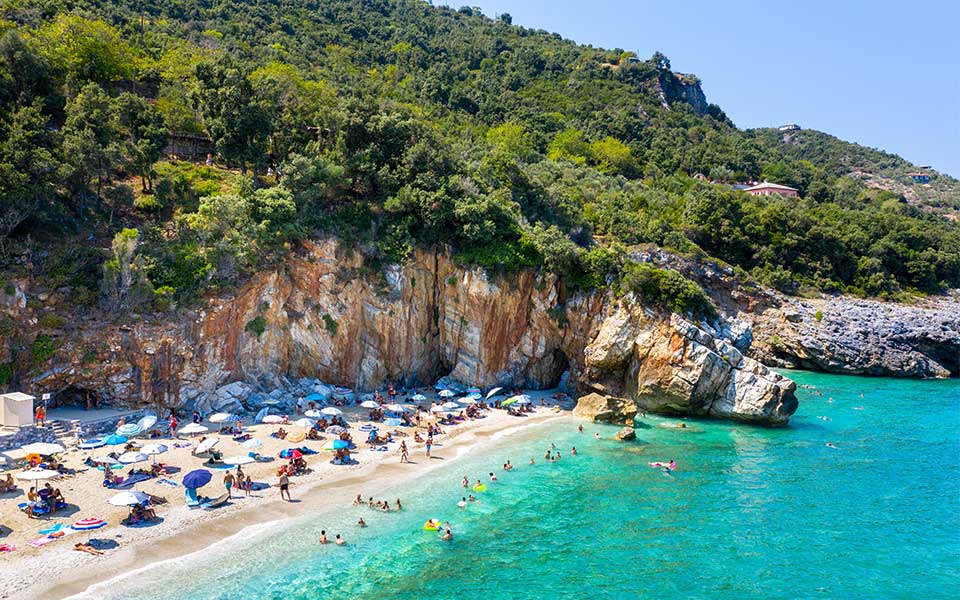
© Shutterstock
The descent will not take more than 1.5 hours, even at a slow pace, but it’s best to start very early in the morning to avoid the heat. Also, make sure you’ve arranged for your transportation back to Tsagarada, as the ascent is not recommended during the summer months. Using a footpath from the village, you can also reach the unserviced beach of Fakistra. Caution is needed for the descent, and be sure to bring supplies. You can reach Mylopotamos Beach more easily and also by car, but you’ll need to go down and then up some steps. There is a refreshment kiosk and, in the afternoon, the rocks provide natural shade.
All the beaches of northeastern Pilio boast clear waters and often have strong waves, as they are exposed to the open sea and the meltemi winds of the Aegean. Consult the locals to choose which beach to visit depending on the weather conditions – what you’ll encounter as you go down depends on the beach’s exact location, length, and how open the bay is.
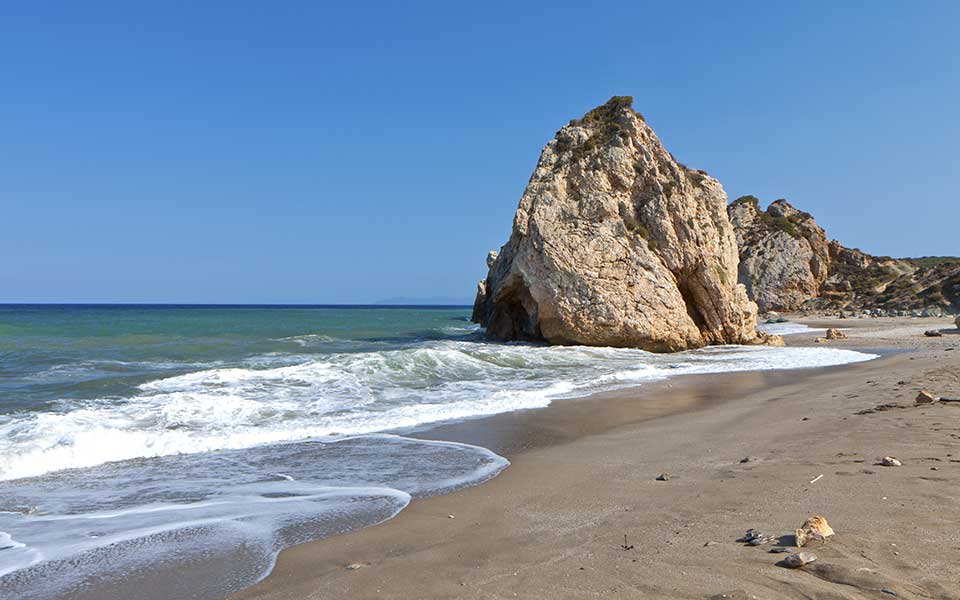
© Shutterstock
Further south, accessible from the villages of Argalasti and Lafkos, there are several more beautiful spots for swimming. These include the large beach of Potistika, featuring sunbeds and umbrellas, the unserviced Melani Beach located right next to it, as well as beaches at Katigiorgis and Vromoneri. If you go even further down, a good option is Aghia Vaso near the seaside settlement of Aghia Kyriaki. The dirt road leading there is now in good condition and doesn’t attract too many people, even during peak times in August. The beach is not serviced, but has trees by the shore that provide shade and respite from the heat.
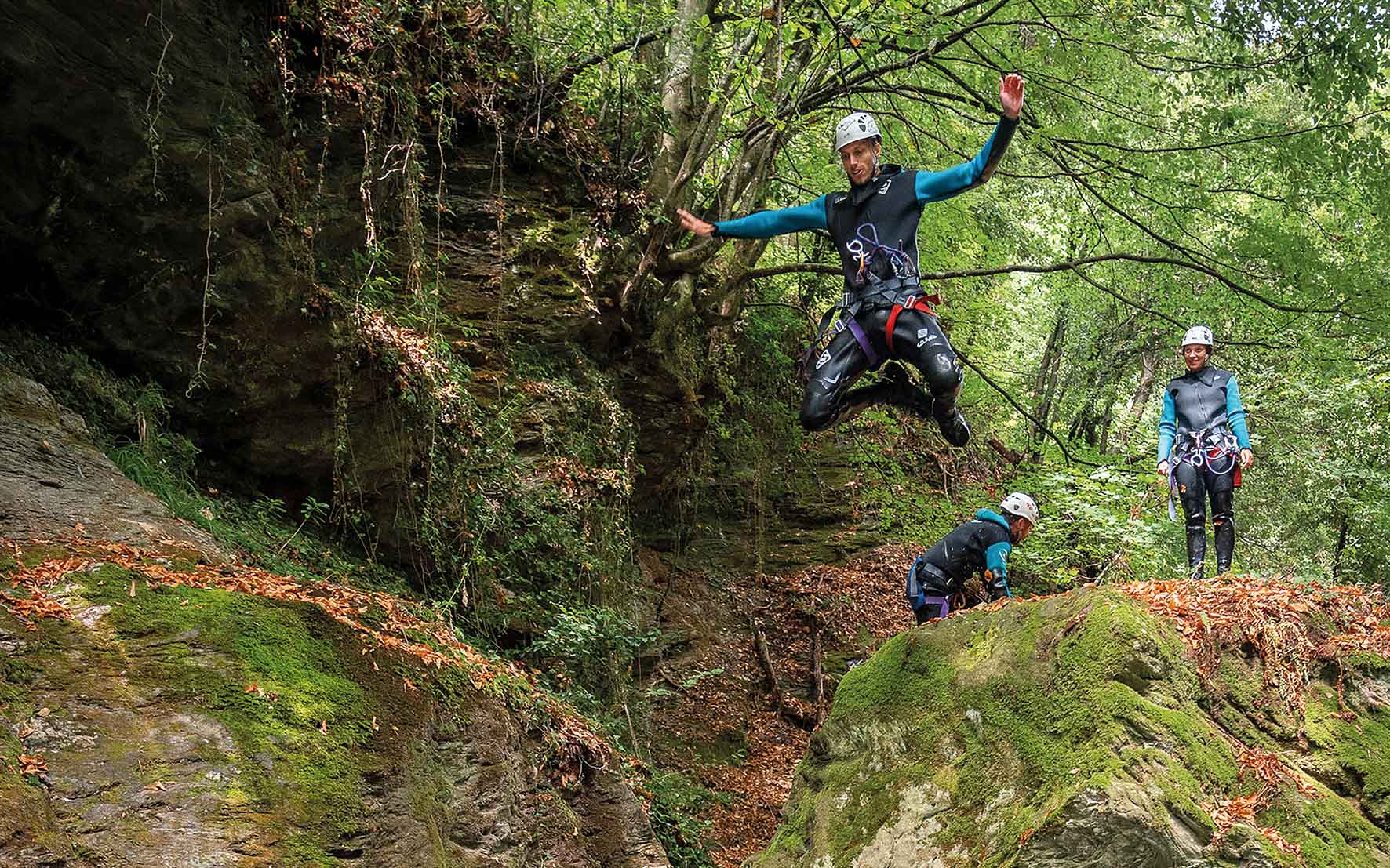
© Nicholas Mastora
Tsagarada: One Village, Four Districts
Nestled amidst dense vegetation, Tsagarada stretches for 7km on both sides of the provincial road that cuts through it. It is divided into four districts, which were respectively formed around their namesake churches: Aghia Kyriaki, Aghia Paraskevi, Aghios Stefanos, and Aghioi Taxiarhes. Each quarter boasts its own stone-paved square adorned with majestic plane trees. Particularly noteworthy is the plane tree in Aghia Paraskevi, which is estimated to be over 1,000 years old.
If you love walking, keep in mind that the four districts of Tsagarada were connected in the past by footpaths, which are still used today. Take the circular route from Aghioi Taxiarhes to Aghia Paraskevi through cobbled paths and forests, or venture deep under the trees, first through chestnut trees and then through oak trees, ascending to the chapel of Prophet Elias above the settlement. Tsagarada is well-suited for nature-oriented activities; in fact, the area hosts local alternative tourism offices that offer organized hikes, biking excursions, jeep tours, canyoning in the gorges, as well as horse riding in the mountains. The Long Pilio Trail, a new 168-km hiking route that traverses Pilio from north to south, connects Tsagarada to both Damouhari and the village of Milies.

